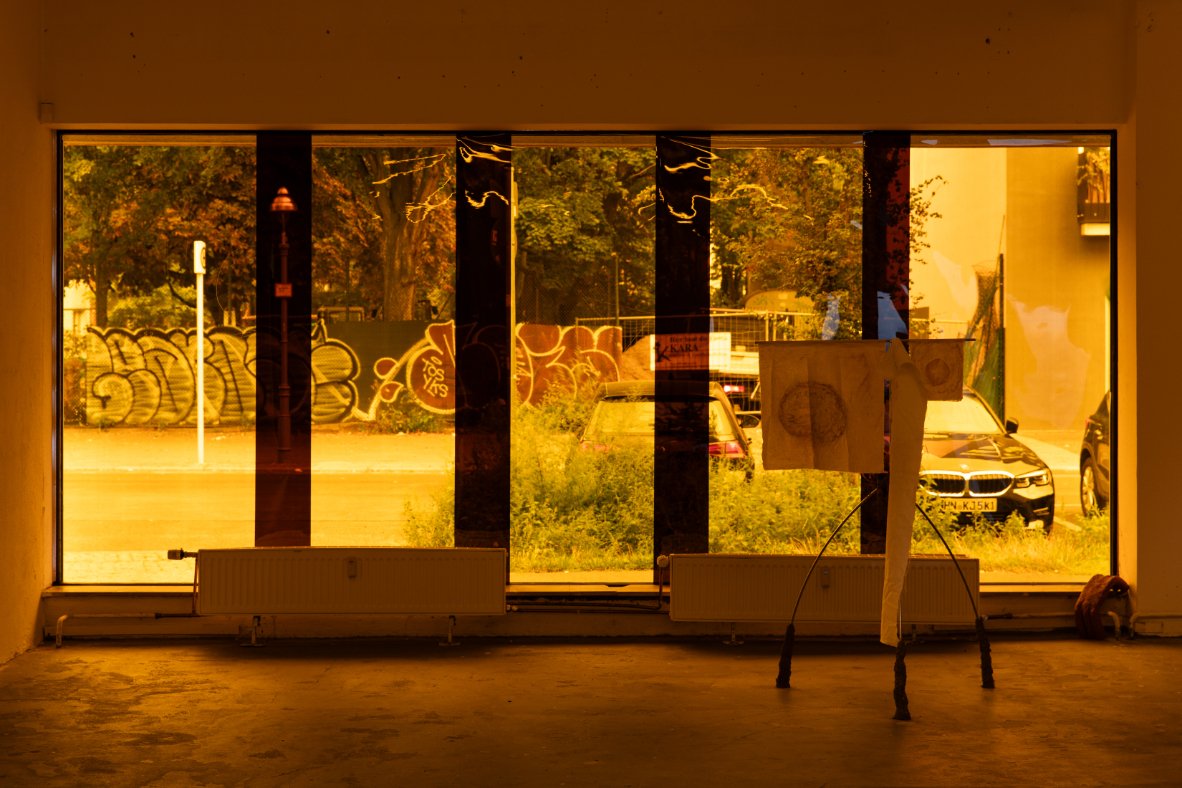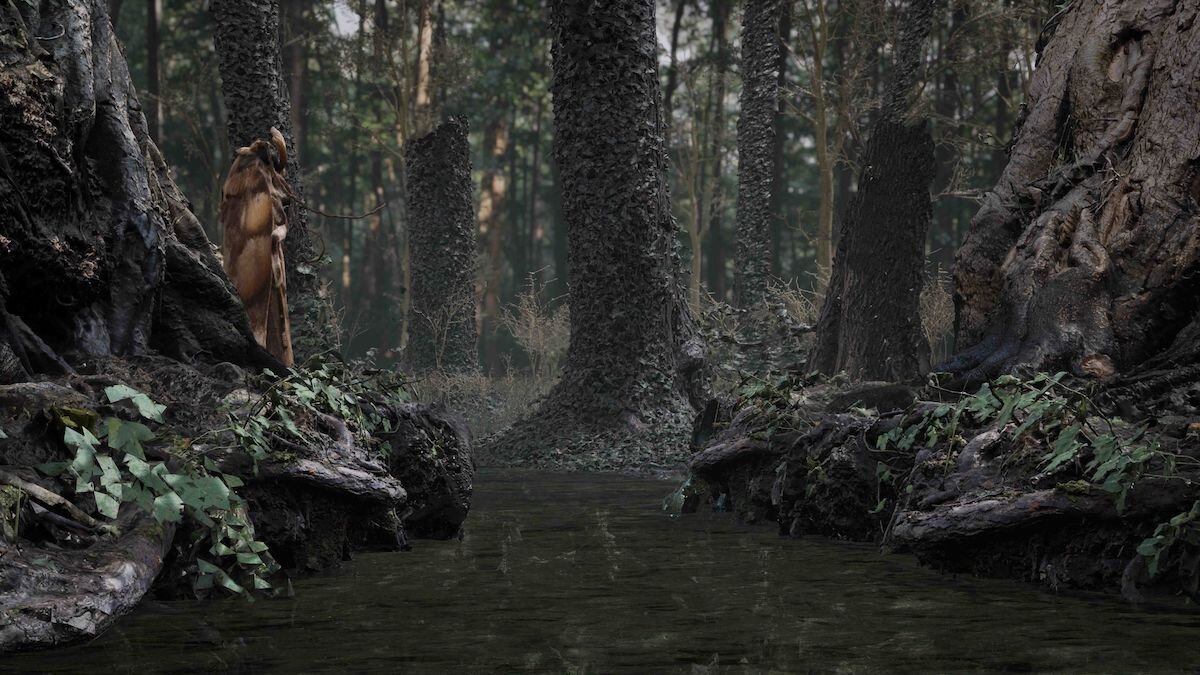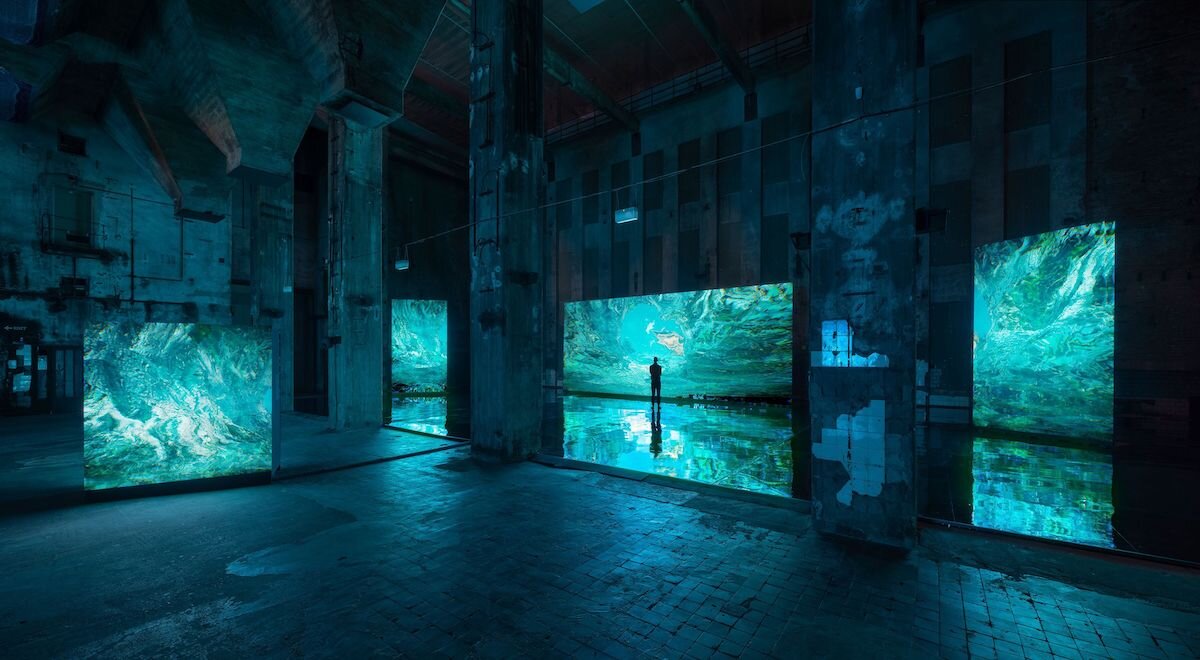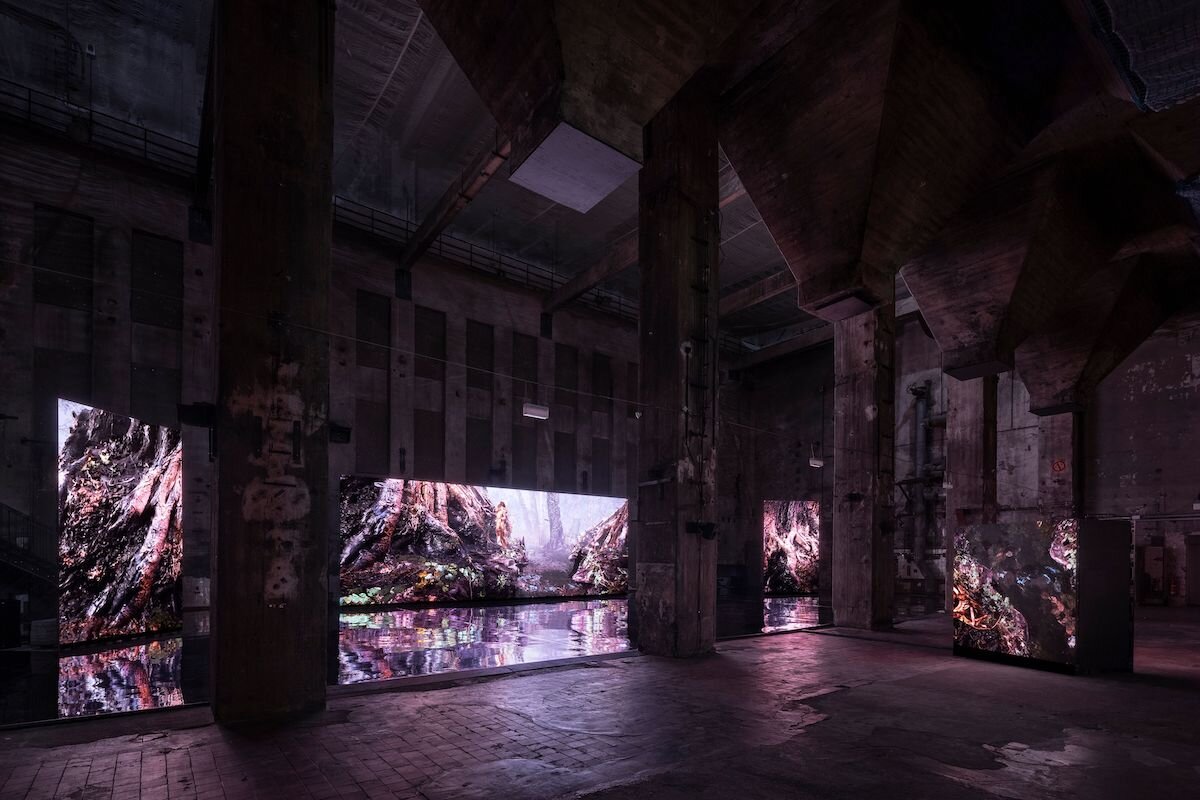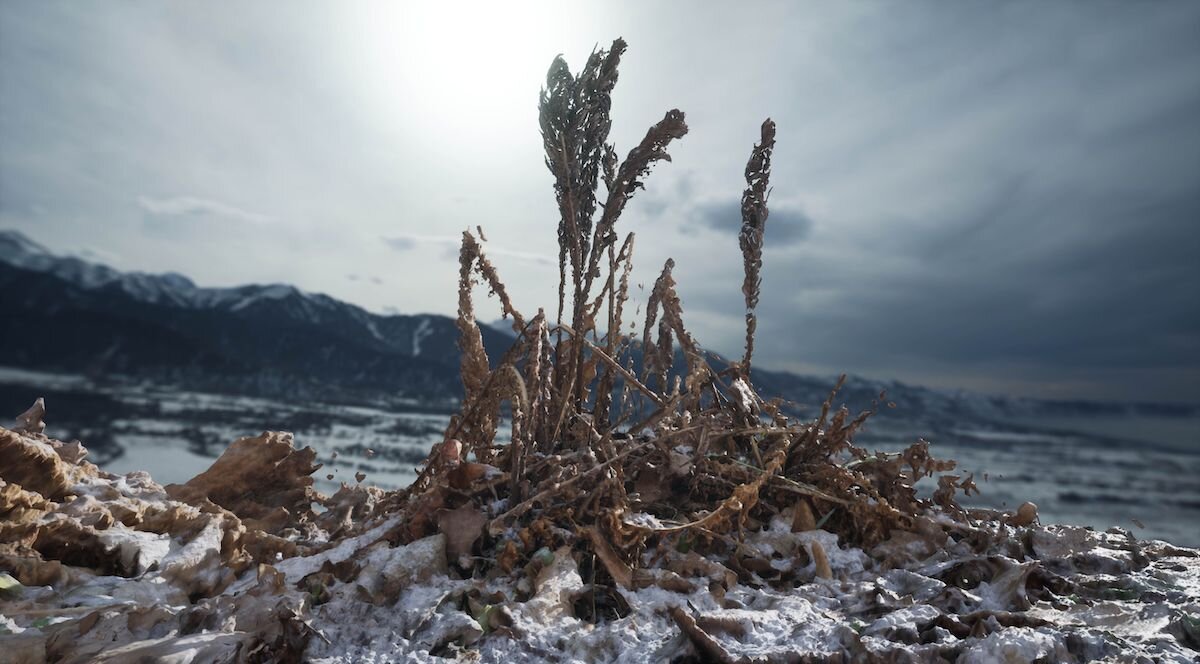AR artist Jakob Kudsk Steensen turns the Halle of Berghain
into the mythological swampland it sits upon
text by Janna Shaw
photographs by Timo Ohler
It was five years ago when I first came to the fabled cathedral that is Berghain. The voyage of getting to the abandoned power depot-cum-dance Mecca from Warschauer Straße involved a journey, of course, as all worthy destinations must. First, back then, the ‘dancer’ is taken through an abandoned strip of supposed park, littered with broken glass, graffiti, and empty baggies. You will be approached by haggard creatures of Friedrichshain asking for tokens in the form of Pfand. You will be approached by many alchemists, offering you a variety of elixirs to accompany you on your trip. Do not take them.
By the time the behemoth structure appears in site, the final stretch (before the line and final boss, which many will find most daunting) is a large field of dirt. Depending on the season and the climate, that large field of dirt will be a large vat of mud. Depending on the shoes, some turn around. Dancer, tred lightly.
I have not retraced these steps in well over a year. In this timespan, the stretch of garden has regrown into a small urban farm, with mothers meeting for coffee, a group of green vests tending to bushes of herbs, no trash in site, all graffiti covered. People now feel comfortable letting their dogs explore the lush terrain off leash.
And that plot of mud? It has been blanketed with green grass. There are sidewalks. A man mowing. Staring up at Berghain, still draped with its ‘Morgen ist die Frage’ banner, I felt a sense of cognitive dissonance. Where am I?
When first settled upon in the 13th century, Berlin and its surrounding area was a swamp. Some of it still is, especially the further up north you go. There is speculation that the very name ‘Berlin’ comes from the Slavic word for swamp: ‘Berl’
An entire language and religion was created around Berlin’s murky ecosystem. Its first settlers came to make sense of its magical decay and regrowth through myth and legend, passed down for generations. Sorbian folklore speaks of pagan deities appearing as great trees, of three-headed snakes representing the tri-fold existence of life. Folk songs were created to guide those that understood the language through the more treacherous zones, which would ultimately lead to areas of beauty and respite, to clean water and vegetation. If you did not know the melody, you were a foreigner, not to be trusted. Maps were not drawn, they were sung.
The Halle of Berghain has been turned into the swampland it sits upon. Artist Jakob Kudsk Steensen has re-created that which existed, using a gaming platform as his canvas, displayed on a multitude of LED screens. Black reflective flooring gives those who enter a sense of topsy-turvy pseudo-reality pooling around them.
Steensen collaborated with the Natural History Museum of Berlin to make this endeavor a realistic experience, rather than a realm reinterpreted. The museum’s collection is one of the oldest in the world, and it includes more than 30 million objects and documentation originating from the Berlin area. For the exhibit, natural structures, such as mushrooms, minerals, and live life, were produced through Unreal Engine, a gaming software that allows high-def replications of objects. AI-assisted ray tracing, a technique which enables realistic lighting and reflection, is also used to make the shadows and glimmers of light all the more believable.
There are a multitude of screens to watch, allowing different ways to see your environment. An extended cinematic screen stretches from one side of the Halle to the other, for viewers to sit and gaze upon as a movie. Square screens dot the center of the room, showing molecular close-ups that appear as abstract artwork. Flanked upon the outer wall are more screens. Two windows have been opened (a rarity at Berghain), to allow for natural lighting and a sense of grounding.
The downstairs entry hall also includes screens, showing the depths of the underworld. As above, so below.
Sitting there, watching what was, what is, I fell into a meditative state. The Halle is soaked in speakers playing field recordings from swamps, as well as droning by the sound composer Matt McCorkle, and interspersed whispers and sounds by the musician Arca, whose first performance was in Berghain. The sounds morph from the primal—a frog bellowing—into the sophisticated—“a singing ritual of past sensibilities.”
As soon as one may question if the piece they are watching is simply hi-def close up video footage of mushrooms and molds and water and trees, a slight tinge of fantasy flicks across the screen: a snake morphs into a root; a firefly erupts into a flash; the wind in the rustling leaves is for a moment made visible. And at some point, the images begin to disintegrate into their molecular structures, with no filters placed upon them. DNA sequencing is stripped and shown bare, giving a glimpse at the tech-organic, no filter.
In a world where all has been taken, claimed, bent to our will, extorted, destroyed, capitalized upon, revamped, and arguably beautified, the Berl-Berl exhibit begs to question how in the future we will be able to experience the natural. It places importance on documentation. It reveals the dire need for us to honor from whence we came to better understand ourselves, and it shows the potential role of artists in the future.
As I left the exhibit, and walked past the front of the empty queue of Berghain, past the green field that once was mud, back through the park with basil and elderflower, with manicured paths and park patrols, two young girls approached me, asking where they could find Berghain, asking if it still existed.
In a way it did. In a way it didn’t. Mythologically speaking, it will exist forever. Instead of falling into derelict, the entirety of Berghain is currently composed of artists displaying their interpretation of the world around them. New methods of prayer, new approaches to figuring themselves out, questioning our placement. Its placement. A Cathedral repurposed once again, that has been many things for many people throughout the history of Berlin, which will continue to shift and creak, constrict and expand. Berghain, this time, a place of respite and exploration, resting solidly upon its swamp, allowing all to enter, if only you know how to find it.
Berl-Berl by Jakob Kudsk Steensen is commissioned by the Berlin-based art foundation Light Art Space (LAS). The exhibition is curated by Emma Enderby, of New York’s The Shed, with sound composition by Matt McCorkle, featuring music by Arca.
Berl-Berl is on view through September 26 @ Halle am Berghain, Am Wriezener Bahnhof 10243, Berlin



